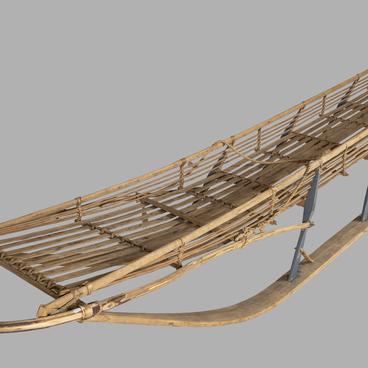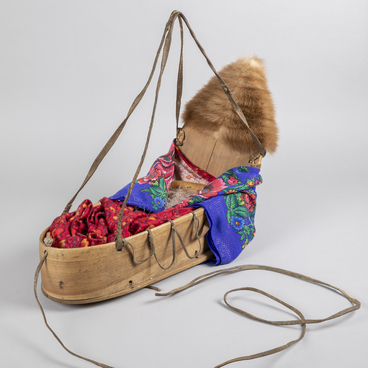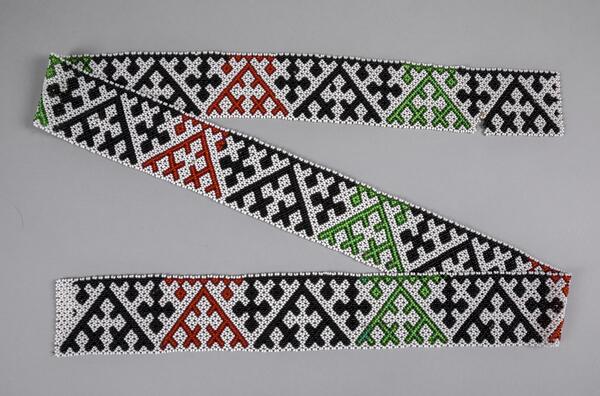Beaded ribbons often depict patterns with variations of triangles, crosses, rhombuses, squares. Even the most simple pattern created by a Khanty woman has a rich texture and color thanks to the use and combination of various materials. There is a special technique for handling each of these materials. For example, when working with leather, fabric or fur the craftswomen use stitching, applique, interweaving of leather strips and passing bundles of colored hair through incisions, along with other methods.
The couching stitch is mainly used when working with beads. A beaded ribbon is first created and later sewn to the item. The base for the beaded ribbon is so durable that even after the clothes have been worn out, the ribbon is cut and used for decorating another item or piece of clothing. Such ribbons from old clothes were stored in special bags and passed on from mother to daughter. Thus, motifs, patterns, and composition techniques have been preserved.
Weaving with beads was much less common. Openwork ribbons were used for making forehead, pectoral and neck jewelry. This technique is currently used for making belts, purses, and souvenirs.
The tools and materials required for this kind of decorative art are very simple. Besides different kinds of beads, one needs only a nylon thread, a fishing line, a steel wire of any thickness, and some thin needles.







